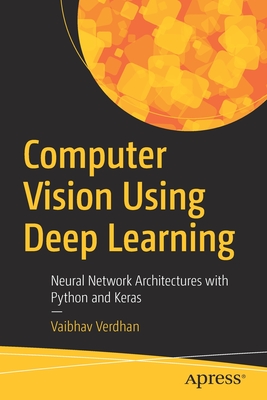Sharing Network Resources (Paperback)
暫譯: 共享網路資源 (平裝本)
Abhay Parekh, Jean Walrand
- 出版商: Morgan & Claypool
- 出版日期: 2014-04-01
- 售價: $1,620
- 貴賓價: 9.5 折 $1,539
- 語言: 英文
- 頁數: 150
- 裝訂: Paperback
- ISBN: 1627054340
- ISBN-13: 9781627054348
海外代購書籍(需單獨結帳)
買這商品的人也買了...
-
 C++ 並行程式設計實戰手冊 (C++ Concurrency in Action: Practical Multithreading)
C++ 並行程式設計實戰手冊 (C++ Concurrency in Action: Practical Multithreading)$680$537 -
 $1,205Data Communications and Networking, 5/e (IE-Paperback)
$1,205Data Communications and Networking, 5/e (IE-Paperback) -
 $505C++ 程序設計 : 原理與實踐(基礎篇), 2/e (Programming: Principles and Practice Using C++, 2/e)
$505C++ 程序設計 : 原理與實踐(基礎篇), 2/e (Programming: Principles and Practice Using C++, 2/e) -
 $704C++ 入門經典, 10/e
$704C++ 入門經典, 10/e -
 實戰封包分析|使用 Wireshark, 3/e (支援IPv6與Wifi) (Practical Packet Analysis: Using Wireshark to Solve Real-World Network Problems, 3/e)
實戰封包分析|使用 Wireshark, 3/e (支援IPv6與Wifi) (Practical Packet Analysis: Using Wireshark to Solve Real-World Network Problems, 3/e)$520$411 -
 $454深度學習原理與實踐
$454深度學習原理與實踐 -
 $301開源網絡模擬器 ns-3 架構與實踐
$301開源網絡模擬器 ns-3 架構與實踐 -
 $2,081Python for Programmers: with Big Data and Artificial Intelligence Case Studies (Paperback)
$2,081Python for Programmers: with Big Data and Artificial Intelligence Case Studies (Paperback) -
 $505深度強化學習原理與實踐
$505深度強化學習原理與實踐 -
 網路分析完全實戰手冊 ─ 使用 Wireshark, 2/e (Network Analysis using Wireshark 2 Cookbook, 2/e)
網路分析完全實戰手冊 ─ 使用 Wireshark, 2/e (Network Analysis using Wireshark 2 Cookbook, 2/e)$690$587 -
 Elementary Linear Algebra: A Matrix Approach, 2/e (PNIE)
Elementary Linear Algebra: A Matrix Approach, 2/e (PNIE)$1,580$1,548 -
 無人機網絡與通信
無人機網絡與通信$594$564 -
 $536霧計算與邊緣計算:原理及範式
$536霧計算與邊緣計算:原理及範式 -
 人工智慧
人工智慧$520$468 -
 A Tour of C++, 2/e (繁體中文版)
A Tour of C++, 2/e (繁體中文版)$480$379 -
 Reinforcement Learning|強化學習深度解析 (繁體中文版) (Reinforcement Learning: An Introduction, 2/e)
Reinforcement Learning|強化學習深度解析 (繁體中文版) (Reinforcement Learning: An Introduction, 2/e)$1,200$948 -
 $383智能算法導論
$383智能算法導論 -
 Linear Algebra and Its Applications, 6/e (GE-Paperback)
Linear Algebra and Its Applications, 6/e (GE-Paperback)$1,380$1,352 -
 從 AI 到 生成式 AI:40個零程式的實作體驗,培養新世代人工智慧素養
從 AI 到 生成式 AI:40個零程式的實作體驗,培養新世代人工智慧素養$560$442 -
 Understanding Deep Learning (Hardcover)
Understanding Deep Learning (Hardcover)$2,150$2,107 -
 $301智能群體博弈
$301智能群體博弈
商品描述
Resource Allocation lies at the heart of network control. In the early days of the Internet the scarcest resource was bandwidth, but as the network has evolved to become an essential utility in the lives of billions, the nature of the resource allocation problem has changed. This book attempts to describe the facets of resource allocation that are most relevant to modern networks. It is targeted at graduate students and researchers who have an introductory background in networking and who desire to internalize core concepts before designing new protocols and applications.
We start from the fundamental question: what problem does network resource allocation solve? This leads us, in Chapter 1, to examine what it means to satisfy a set of user applications that have different requirements of the network, and to problems in Social Choice Theory. We find that while capturing these preferences in terms of utility is clean and rigorous, there are significant limitations to this choice. Chapter 2 focuses on sharing divisible resources such as links and spectrum. Both of these resources are somewhat atypical -- a link is most accurately modeled as a queue in our context, but this leads to the analytical intractability of queueing theory, and spectrum allocation methods involve dealing with interference, a poorly understood phenomenon. Chapters 3 and 4 are introductions to two allocation workhorses: auctions and matching. In these chapters we allow the users to game the system (i.e., to be strategic), but don't allow them to collude. In Chapter 5, we relax this restriction and focus on collaboration. Finally, in Chapter 6, we discuss the theoretical yet fundamental issue of stability. Here, our contribution is mostly on making a mathematically abstruse subdiscipline more accessible without losing too much generality.
“This book is beautifully written and will be a major resource for graduate students and researchers. I plan to have my graduate students read it, both for its intellectual content and the elegant presentation.”
Professor R. Srikant
Fredric G. and Elizabeth H. Nearing Endowed Professor,
University of Illinois at Urbana-Champaign
“This is a very nice book. I look forward to seeing it published and using it in my future offerings of courses on network economics.”
Professor Jianwei Huang
The Chinese University of Hong Kong
“I commend the authors for having successfully brought a diverse set of analytical tools developed in last 30 years from research communities such as economics and operations research into a networking textbook. I am particularly impressed that the authors are able to make these cutting-edge tools accessible to engineering students with little sacrifice for their mathematical rigor and generality.”
Jim Dai
Professor of Operations Research and Information Engineering, Cornell University
The Chandler Family Chair of Industrial and Systems Engineering,
Georgia Institute of Technology (on leave)
“This is indeed a fascinating book, containing many nice results (both classical and new). It covers several key aspects of sharing network resources that are not usually covered in a typical networking book. Mostly based on mathematical models, the book deals with principles instead of protocol details.”
Libin Jiang
Qualcomm Research
商品描述(中文翻譯)
資源分配是網路控制的核心。在互聯網的早期,最稀缺的資源是頻寬,但隨著網路的演變,成為數十億人生活中不可或缺的公用事業,資源分配問題的性質也發生了變化。本書試圖描述與現代網路最相關的資源分配面向。它的目標讀者是具有網路基礎知識的研究生和研究人員,並希望在設計新協議和應用程式之前內化核心概念。
我們從基本問題開始:網路資源分配解決了什麼問題?這引導我們在第一章中檢視滿足具有不同網路需求的用戶應用程式集的意義,以及社會選擇理論中的問題。我們發現,雖然以效用來捕捉這些偏好是清晰且嚴謹的,但這種選擇存在顯著的限制。第二章專注於可分配資源的共享,例如鏈路和頻譜。這兩種資源在某種程度上都是不典型的——在我們的上下文中,鏈路最準確的模型是排隊,但這導致了排隊理論的分析不可處理性,而頻譜分配方法涉及處理干擾,這是一種尚未充分理解的現象。第三章和第四章是對兩種分配工作馬的介紹:拍賣和配對。在這些章節中,我們允許用戶利用系統(即,採取策略),但不允許他們串通。在第五章中,我們放寬了這一限制,專注於合作。最後,在第六章中,我們討論了理論上但基本的穩定性問題。在這裡,我們的貢獻主要是使一個數學上深奧的子學科變得更易於理解,而不失去太多的普遍性。
「這本書寫得非常好,將成為研究生和研究人員的重要資源。我計劃讓我的研究生閱讀它,因為它的智識內容和優雅的呈現。」
教授 R. Srikant
伊利諾伊大學香檳分校 Fredric G. 和 Elizabeth H. Nearing 受贈教授
「這是一本非常好的書。我期待看到它出版,並在未來的網路經濟學課程中使用它。」
教授 黃建偉
香港中文大學
「我讚揚作者成功地將過去30年在經濟學和運籌學等研究社群中發展出的一系列多樣化分析工具引入網路教科書。我特別印象深刻的是,作者能夠使這些尖端工具對工程學生變得可接觸,而不過多犧牲其數學嚴謹性和普遍性。」
Jim Dai
康奈爾大學運籌學與資訊工程教授
喬治亞理工學院工業與系統工程查德勒家庭講座教授(休假中)
「這確實是一本引人入勝的書,包含許多優秀的結果(包括經典和新穎的)。它涵蓋了分享網路資源的幾個關鍵方面,而這些方面通常不會在典型的網路書籍中涉及。這本書主要基於數學模型,處理原則而非協議細節。」
Libin Jiang
高通研究






























